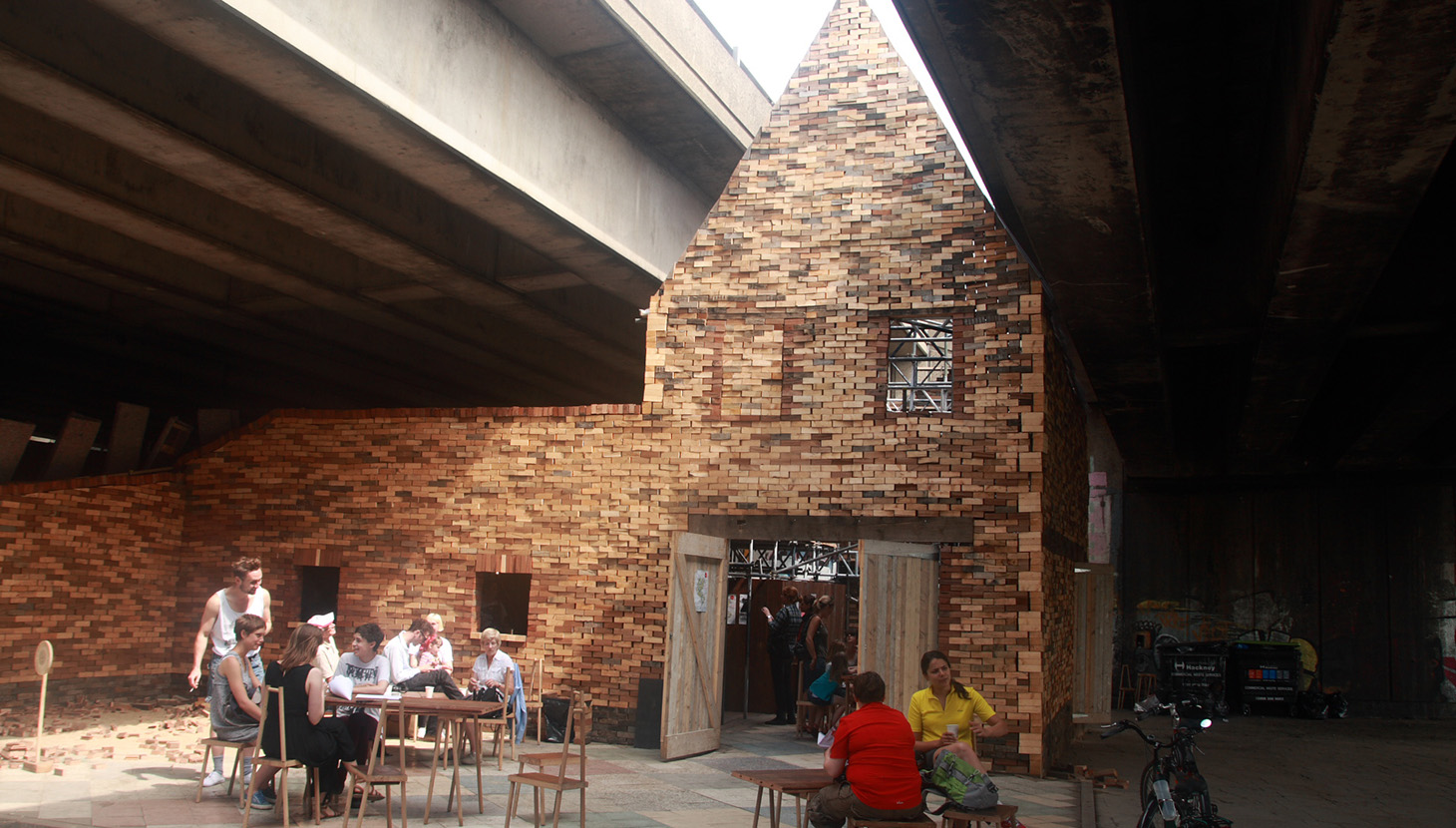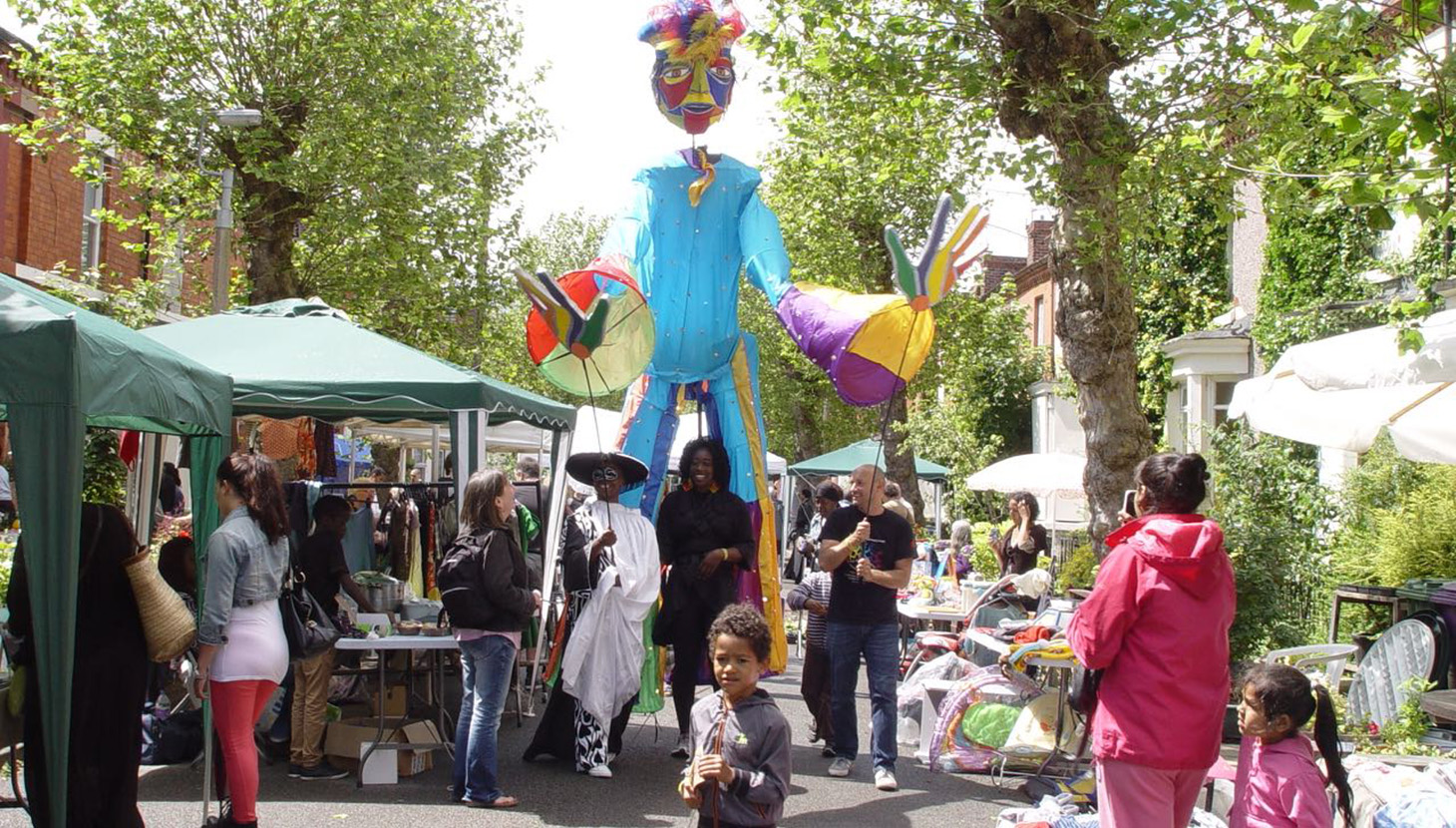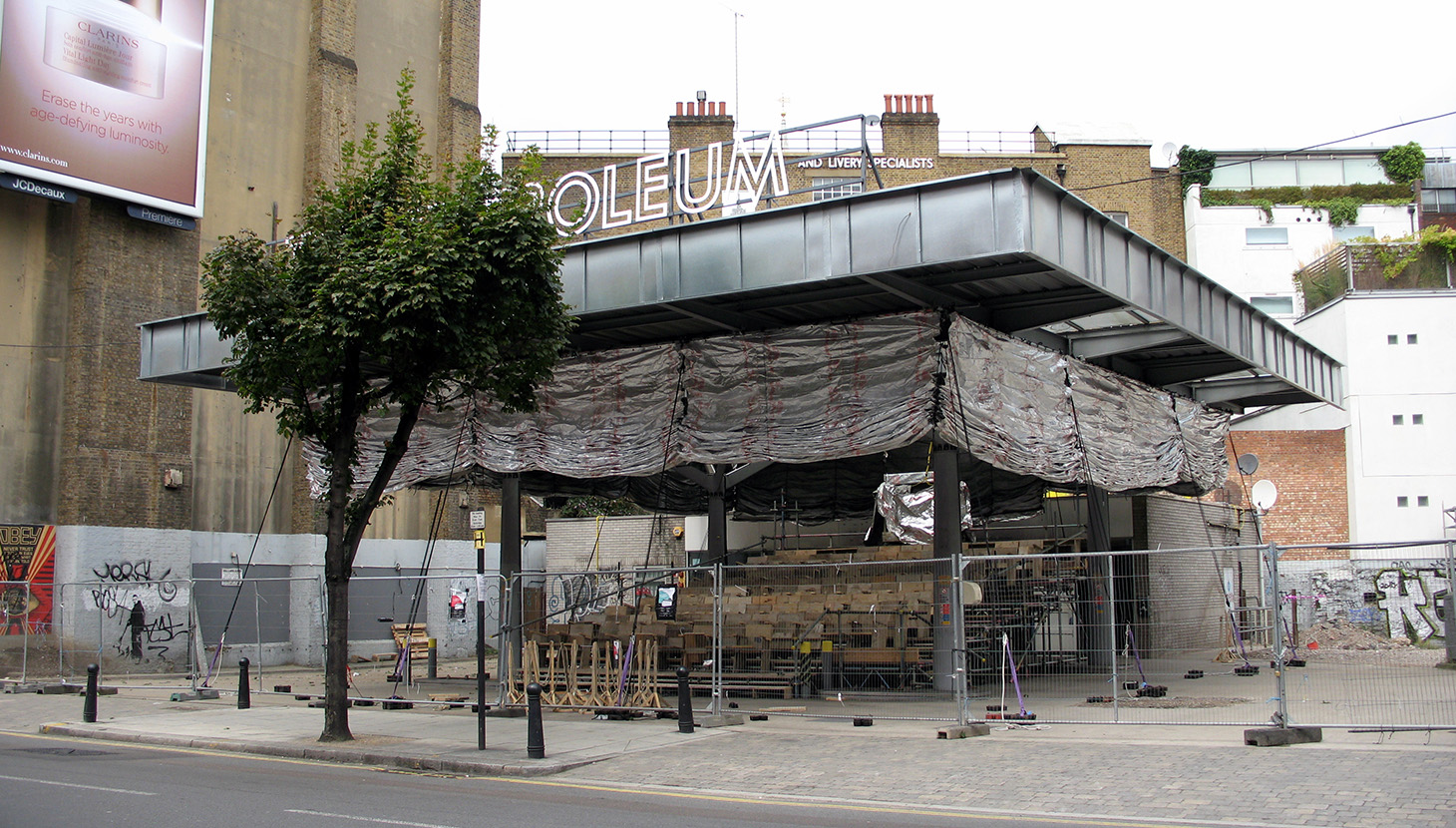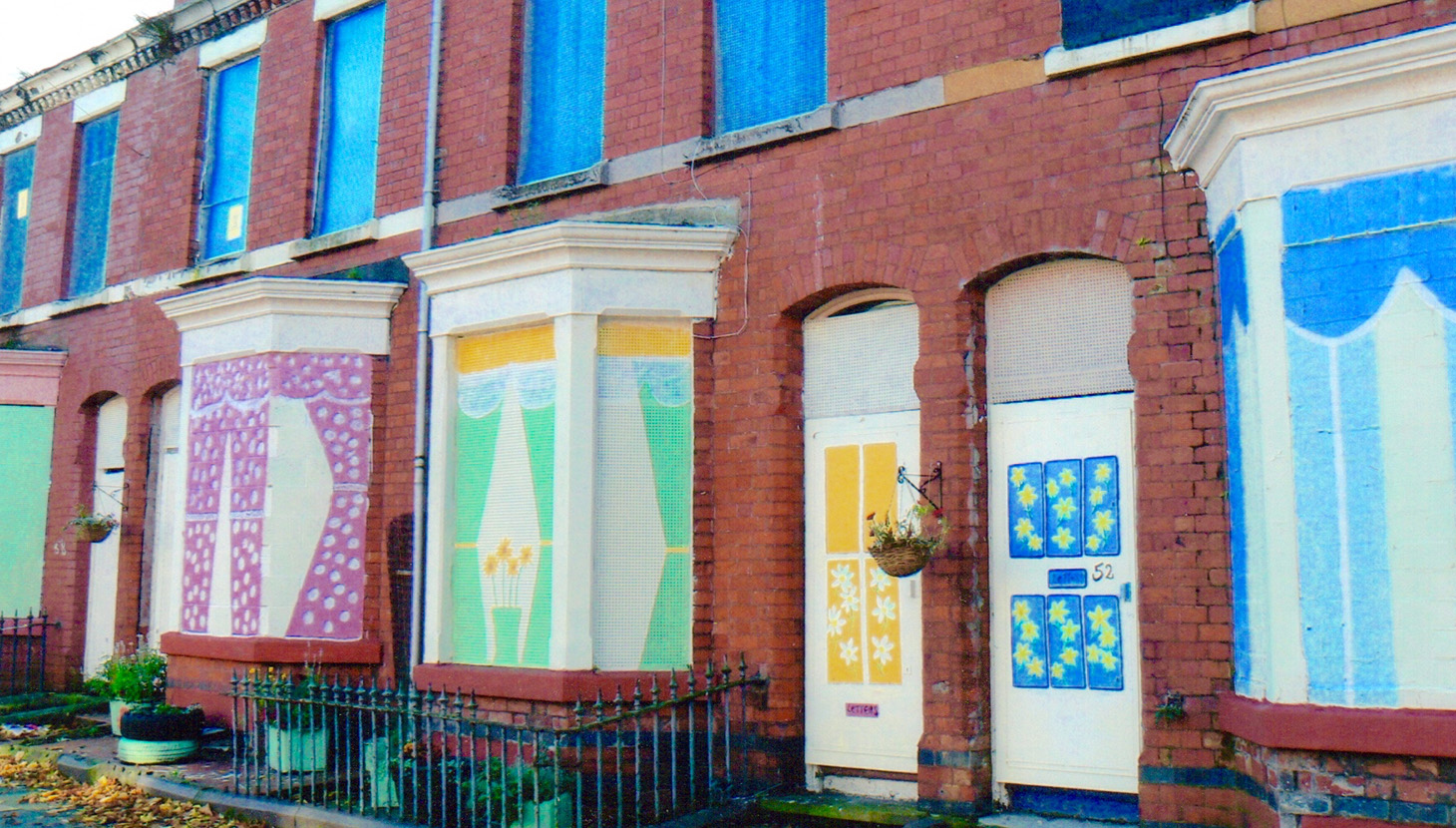Kieran Toms talks to Alice Edgerley of Assemble, which saw their Cairns Street project in Liverpool reach the finals of the Academy’s 2015 Great Street Award and win the 2016 Turner Prize.
“Yeah, but is it Art?” To be fair to Assemble, pretty much every Turner Prize entry gets the same treatment. There’s been mercifully less debate about whether what they do is urbanism though. In fact, part of their winning entry, Cairns Street, was a finalist in The Academy of Urbanism’s awards, noted as being “regenerated in a most remarkable way.”
The street is within the Granby Triangle, an area of Liverpool where demolition and clearance have been planned for years. But residents there thought that their streets were worthy of restoration. The battle ended up with them forming a Community Land Trust (CLT) and, over the last decade or so they have initiated a programme of ‘direct action’: cleaning up streets, introducing plants and flowers, and painting hoardings. Assemble didn’t start the process, but they soon became a key part of the project.
The judges commented that Cairns Street showed “determined community action winning out where official approaches failed,” and that “the planting and street market have created opportunities for positive conversations that could not happen otherwise.” The street, they argued, has shown the value of artistic engagement beyond merely cost. The judges’ final summation is particularly telling: “Ultimately, Cairns Street is more about the people constructing a resilient community than the renovation and construction of houses.”
This tipping of the balance towards a people-led process is backed up by even a cursory glance at Assemble’s website. It is immediately evident that they do a lot of different things. Many of the photos they have picked to show their work are not the shiny, shimmering examples of the finished product that you might see elsewhere, but instead are photos of the work itself: Hard graft. Hammering. People discussing.

Folly for a Flyover, Hackney Wick ph Matthew Brown
In the same way, their description of themselves is notably devoid of labels, and instead attempts to describe what they actually do, and what they hope to get out of it: “Assemble are a collective of 15 whose work addresses the relationship between people and the built environment.” Elsewhere, they describe how they: “…take a hands on, collaborative approach, and whilst their work usually includes design it rarely starts or ends there, often employing a range of means from the social to the infrastructural to make spaces which enable independence; self-authorship, creativity and difference.”
In some ways then, they are quintessentially urban – a mish-mash of different ideas and disciplines, thrown together in improvisation and adaptation, but ultimately impactful and singular, simultaneously independent and collaborative. I spoke to Alice Edgerley from the collective, who was kind enough to take some time from what sounds a hectic schedule to share with me some insight into Assemble.
I started at the beginning. The Cineroleum was their first project, building a temporary cinema on a former petrol station site in London’s Farringdon in 2010. How had that helped to form their principles and processes?
Alice told me: “We were really keen to have a go at doing our own projects. A number of us had graduated – we were all working in practices at the time and we’d meet up in evenings and weekends, we were trying to look for a place to build our own project.”

Cineroleum at night, Clerkenwell Road, London ph. John Gorgy
A number of the collective gained early construction experience working on other temporary projects including Franks Café in Peckham and the Southwark Lido by EXYZT. “From this we learned how to build things and learned construction – really, the process started from there – we came to understand all the different parts of project development.”
The plans were led very much by a constrained budget – an Arts Fund grant of £2,500 – which influenced material choices and also how they facilitated project delivery: “We were all working as volunteers, all the elements were designed so that anyone could come on site to build really easily. We set up production lines so that people could get involved, usually on site, and we had about 200 or so volunteers over the course of the three-week period.”
At that point it wasn’t necessarily conceived as part of a long-term vision, but was approached as a one-off project. Alice said: “We tried to think about how you could recreate the golden age of cinema: festoon curtain, signs, flip-up seats. The Cinema Museum, a fantastic museum in Elephant and Castle, were really helpful – lots of different people were involved, with different skill sets.”
Alice was keen to impress on me that other groups should be encouraged to attempt similar things. Here is her advice: “Just start looking for a site. Think about the sorts of things you might do there, how it is being used, how public it is. Start talking to the landlords, look it up on the land registry. See if it is available for a temporary project, or something else. Notice a place that looks like somewhere something could happen, and then just go from there. If you want it to be a self-build or open build, then you need insurance.
Then it’s just a case of thinking about all of the programming as well as the actual structure, what prices things are, what stuff will be happening. The good thing about it being on a very low budget is that you have to think about materials and how you use them in a fairly resourceful way.” In the years since their first project though, I speculate, their profile and presumably, their resources, have grown a little. How has their process changed as they have grown in experience and in profile?

Cairns Street
“I think it’s definitely been on a project by project basis depending on who we are working with but a lot of our references, approaches, starting points, and questions were started on those first projects,” said Alice. She stresses the importance of making something public, and involving the public in the development of their environment, and that it is also about resourcefulness and affordability, a way to make something really accessible. I tell Alice that I am interested in how these principles and methods might work outside of a collective like Assemble, in other organisations. She tells me that they are definitely applicable on a larger scale. She points out that the aforementioned work in Liverpool is itself their biggest project, so I can see that their methods are already working on different scales.
She also points out that their methods are not necessarily new or unique. She gives me the example of French architect Lacaton & Vassal, citing their “amazing project” in Northern Paris where they’ve retrofitted an existing tower block. This is the 16-storey Tour Bois-le-Prêtre, dating from 1961, which was originally designed by French architect Raymond Lopez.
They have transformed it, showing off an alternative approach to redevelopment of post-war housing. Lacaton & Vassal were established in 1987 and are still going strong, and Alice is pleased to reflect that those sorts of projects are what they do all the time. Referring also to things like the recent rise in the number of Community Land Trusts, and of child-led play environments, Alice explains how Assemble are just part of a much bigger thing.

Cineroleum, Clerkenwell Road, London ph. El bingo
More generally, Alice explains: “A lot of our projects are based around forming quite strong relationships with the people we’re working with and obviously that does take time. Quite a lot of the time our projects aren’t very fast moving. Also, we’re involved not only in the design and delivery of the project, but the development of brief and the organisation that goes onto run it.
“On a couple of projects, we’re still on the board of the project itself. I think that means that it is easier to work on a smaller scale sometime. It depends on the group you’re working with, because they often have a much wider remit than we do.” And what about the future for Assemble? In terms of how they might expand or grow, the answer isn’t really clear at the moment. Being non-hierarchical, and thus without one boss who will decide it all, they are currently discussing how expanding or growing might work.
But one big change will definitely take place: “We’re having to move out of our current workspace Sugarhouse Studios. Our lease has come to an end, we were given special time there as part of a much bigger development – but it was always due to be demolished, it was always going to be a temporary arrangement.”

Cairns Street
The collective is now looking for a new location in which to set up. However, they are very much relishing the challenge: “I think that’s really exciting, how we’re going to create our workspace, involving lots of other people, thinking about what sorts of facilities we provide, what the public output is, how we’re going to work with the council. It is proving to be a bit of a challenge – especially with how expensive London is. It’s exciting though, thinking about how to make it work!”
Kieran Toms is a transport and public realm planner and a Young Urbanist
visit: assemblestudio.co.uk/